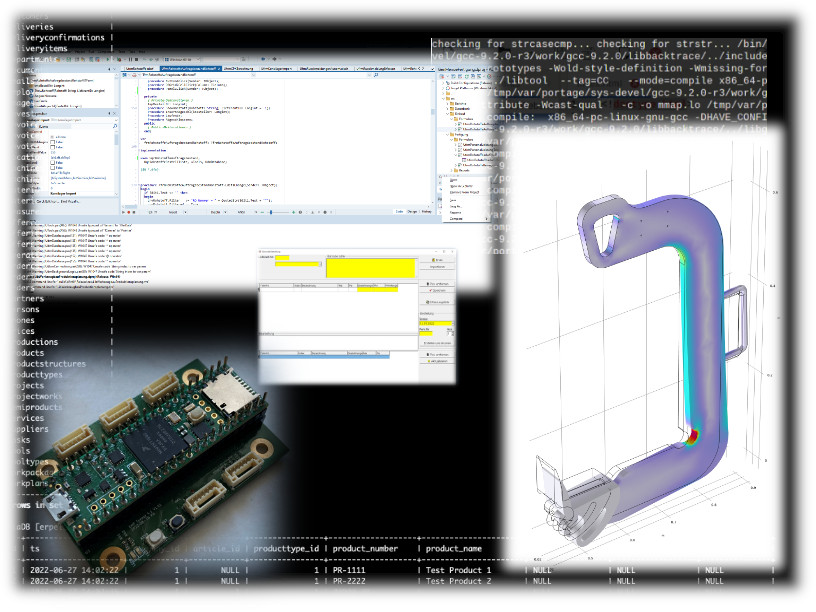Structured Project and Quality Management
Customer satisfaction and quality are our top priorities. At the same time, solutions should be implemented quickly and cost-effectively. For quality assurance, we follow the agile solution process outlined below:
- Analysis
- Development
- Debugging
- Testing
- Delivery
- Adjustments
Tools and Programming Languages
To tackle your challenges, we use proven programming languages, libraries, and software tools.
Whenever possible, we rely on platform-independent open-source solutions.
If needed, suitable methods, models, or simulations for visualization will be developed.
In cases where appropriate tools are unavailable for solving specific problems, occasionally, the creation of software or simple electronic tools can be helpful.

Platforms
- PC platforms (Linux, MacOS, Windows)
- Embedded Linux systems (NVIDIA Jetson, DRIVE)
- Microcontrollers (Arduino, STM32, Infineon XMC)
- FPGA (Intel, Xilinx, Lattice)
Programming Languages
- Programming and system languages (e.g., C/C++, Delphi, Java, Rust)
- Scripting languages (e.g., Python, Bash, HTML, Javascript, SQL)
- Hardware description languages (VHDL, Verilog)
Software and Libraries
- Graphics frameworks (Qt, Vulkan/OpenGL, Delphi-VCL, Java-Swing)
- Flight and driving simulators (X-Plane, CARLA)
- Simulation software (FEM, CFD, COMSOL Multiphysics)
Background of Software Systems
In today’s work environment, one increasingly deals with software systems. These systems typically have the following characteristics:
- Complex (comprising many submodules and functions)
- Error-prone (partially due to complexity)
- Unstructured (e.g., evolved over the years)
- Outdated (utilizing complicated or no longer available technologies)
- Undocumented (qualified employees are gone, and documentation is missing)
- Human operators influence the entire system
These systems have often worked well and for many years – at least until error corrections, adjustments, or new developments were needed (e.g., due to modernization amidst ongoing digitization and networking). In this context, problems can easily arise.
Problem-Solving Strategy
When solving your problems, we follow a scientific approach and the proven Debugging Rules by David Agans:
- First, a thorough understanding of the system is built through comprehensive system analysis
- Next, the malfunction is reproduced
- To find the error and control system behavior, the system is appropriately divided into and isolated as modules
- In doing so, (software) tools may need to be utilized or developed first
- Based on this analysis, a solution plan is created and executed
- The solution and process are documented
- Seemingly difficult problems often have simple causes that are not always immediately apparent (e.g., a forgotten plug)
- If the problem cannot be resolved promptly, taking a break and approaching the problem from another angle often helps
- The entire process is iterative and must dynamically adapt to the respective situation